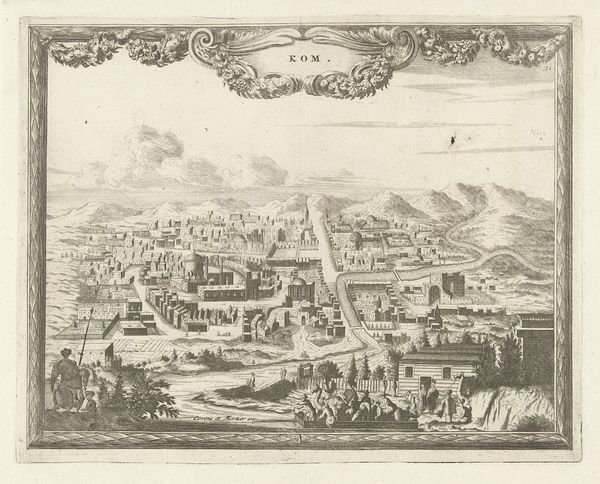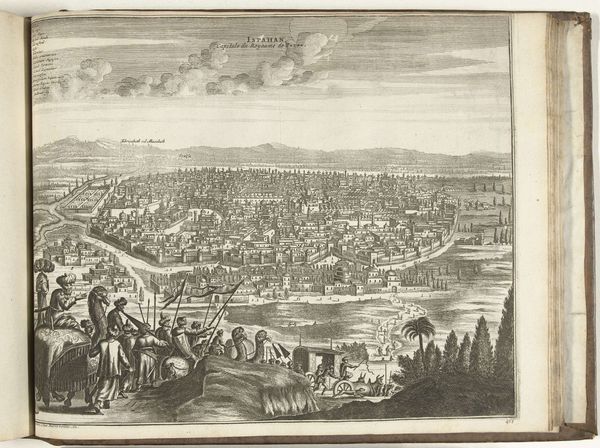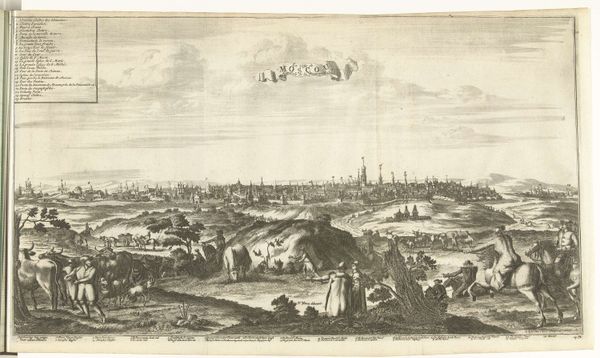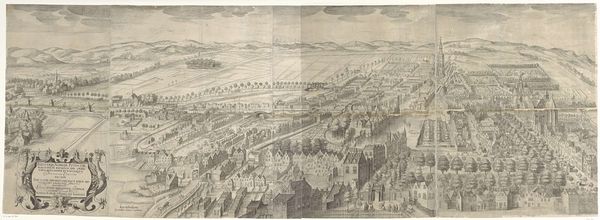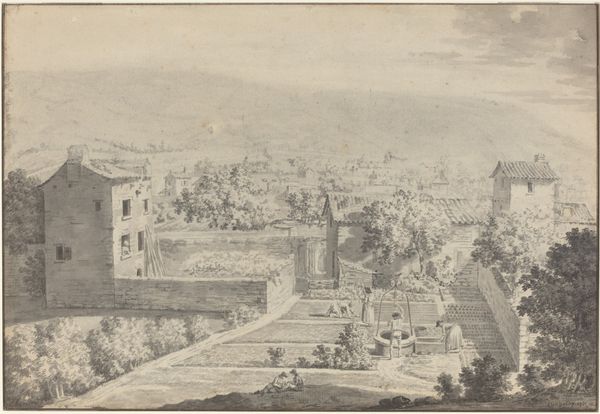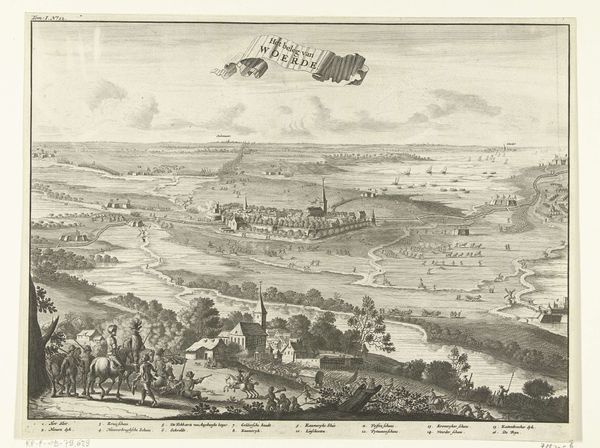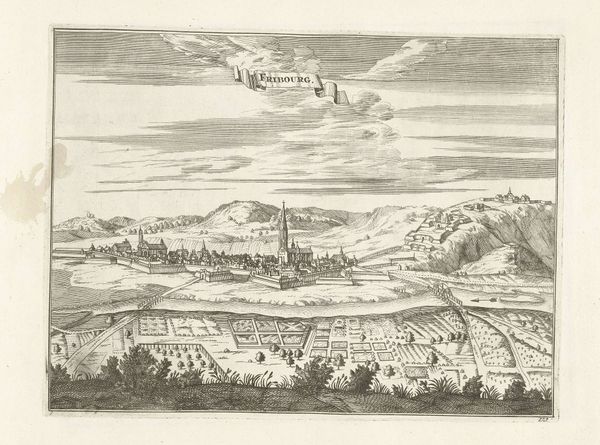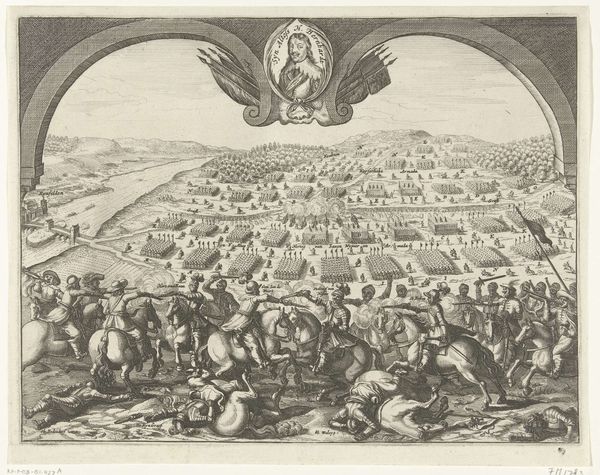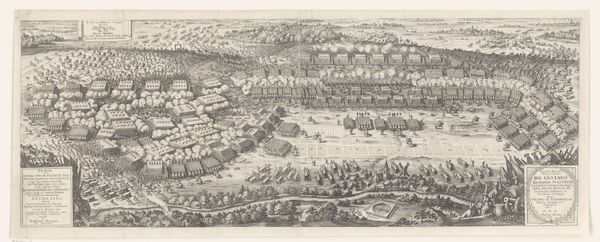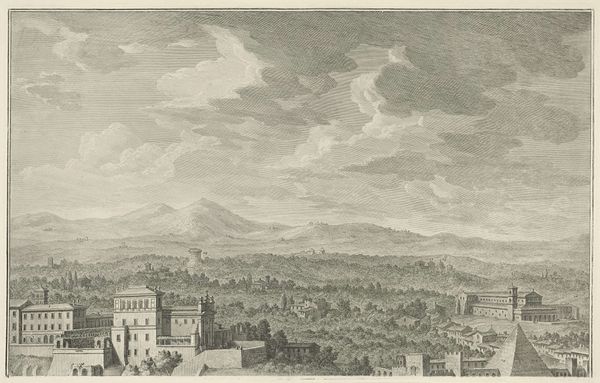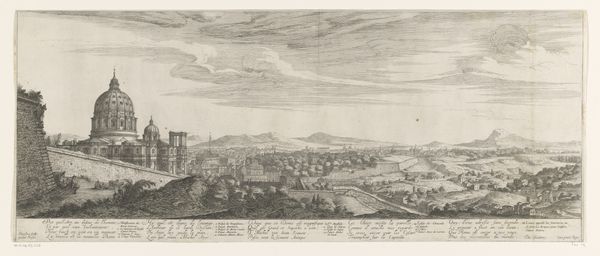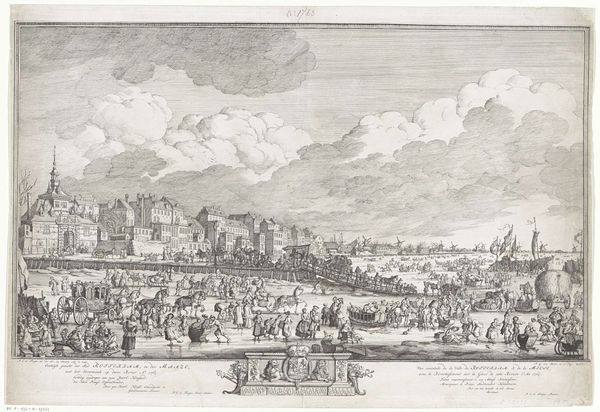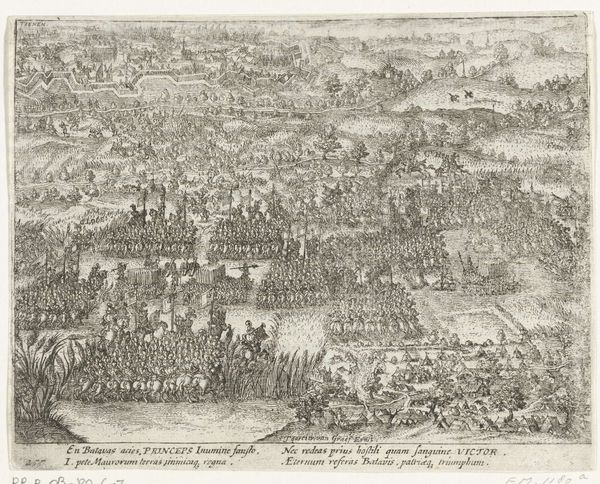
print, etching, engraving, architecture
# print
#
etching
#
romanesque
#
cityscape
#
engraving
#
architecture
Dimensions: height 1029 mm, width 2636 mm
Copyright: Rijks Museum: Open Domain
Curator: Here we have Giuseppe Vasi's "Panorama van de stad Rome," created in 1765, using etching and engraving techniques to capture an expansive view of Rome. Editor: My first thought? Overwhelming. Look at the detail; it feels almost like a map but imbued with the artist's own perspective. The tonal gradations add so much to the effect of recession. Curator: Indeed, it is both informative and a demonstration of artistic skill. During the 18th century, vedute, or views, like this were popular amongst Grand Tourists, acting as both souvenirs and assertions of cultural knowledge. Editor: Souvenirs for the elite, then! I find it funny, like the original postcard, but supersized. What is the feeling it tries to convey? Power? Beauty? There is a palpable sense of pride too. Curator: Precisely. Prints like these circulated ideas about Rome’s classical past, Renaissance glory, and contemporary significance as a center of power. Consider how Vasi carefully composes this image; he is curating Rome for his audience. Editor: I suppose the choice of viewpoint is crucial then. Elevated, dominating; it positions the viewer as an observer of importance. I find my eye wanting to wander off into those distant hills; where does the city end and the natural world begin? Curator: It emphasizes the dialogue between the built environment and its geographical setting, characteristic of the picturesque aesthetic of the time. A panorama invited a more comprehensive and rational appreciation of a city’s urban and architectural fabric. Editor: Comprehensive and rational? Maybe. But I get something more than cold documentation from this, perhaps just the faintest breath of something deeper – the artist's love for the city itself. And the possibilities offered when such grand art finds its place in everyday life. Curator: A sentiment many of Vasi's contemporaries surely shared, and wished to carry home with them. This work allows us to examine those networks through which knowledge, commerce, and aesthetics circulated in eighteenth-century Europe. Editor: So next time I complain about a tourist clogging up the pavement, I’ll remember they are just trying to get in on an age-old quest to discover and to keep beauty! Thanks for shedding light on Vasi's Rome.
Comments
No comments
Be the first to comment and join the conversation on the ultimate creative platform.

